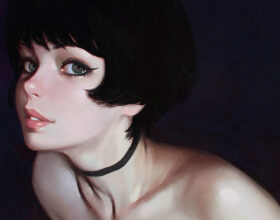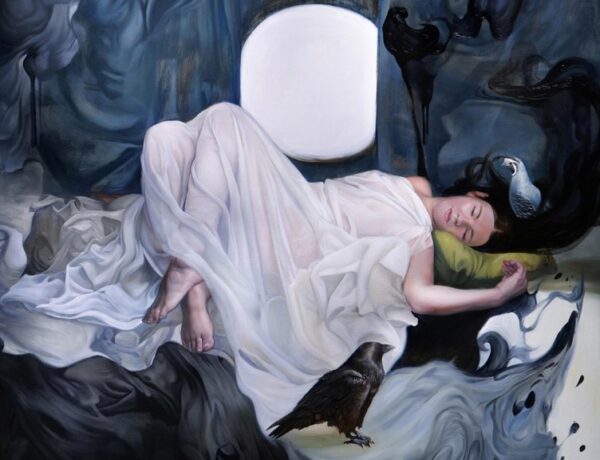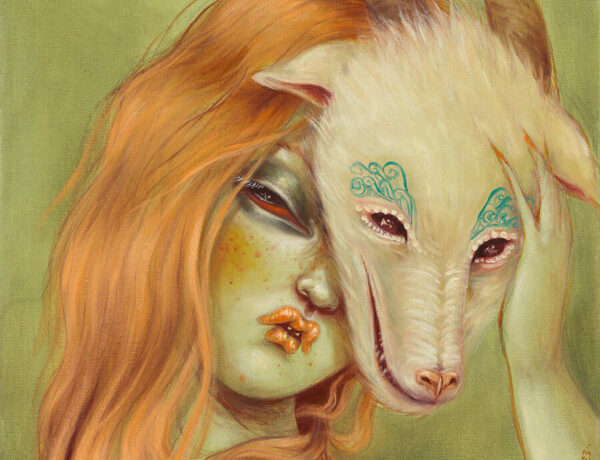Humans are unique creatures. We have been roaming and exploring our little planet for millennia. Asking questions, pondering the universe, trying to figure out the mysteries of life. But there is not greater mystery than humankind itself. Why do we behave the way we do? What are our own unique identities? How do we find our sense of belonging in this world? Italian artist and sculptor Francesca Dalla Benetta explores these themes through her fantastical sculptures.
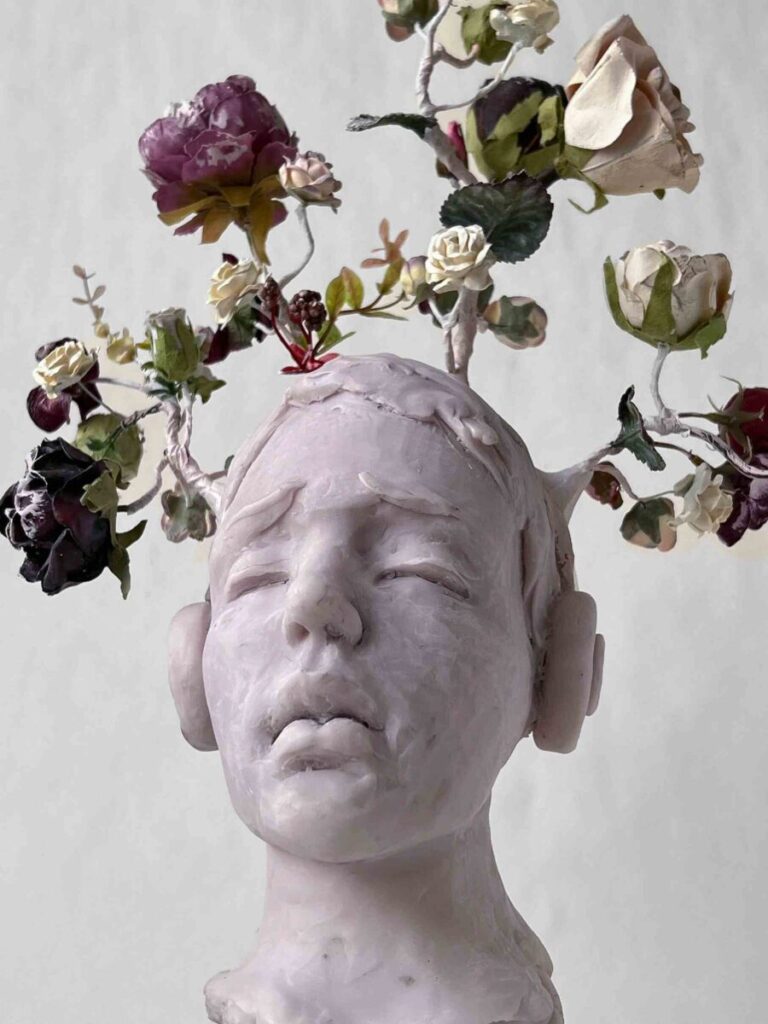

With 10 years experience as a SFX makeup artist in Hollywood, it’s no wonder that Mexican based artist Francesca Dalla Benetta has an excellent imagination. Although Francesca retired her makeup brushes, she certainly didn’t retired her creative spark. Instead of painting faces she’s opted for making them from scratch using bronze, resin and ceramics. Her current body of work, which is an ever evolving collection, deconstructs and reconstructs human behaviour. Her work is a hybrid reality of our world and another surrealist, ethereal realm. It reflects herself and her personal journey through what we call life as well as communicating and connecting with the wider world. While we may never have concreate answers to questions on human behaviour, Francesca certainly does her upmost to answer them using her creative perspective.
I think classical art is in my blood so with time I made peace with it and I started to appreciate it, working more and more with anatomy, learning and finding a balance with my love for the surreal and fantastic.
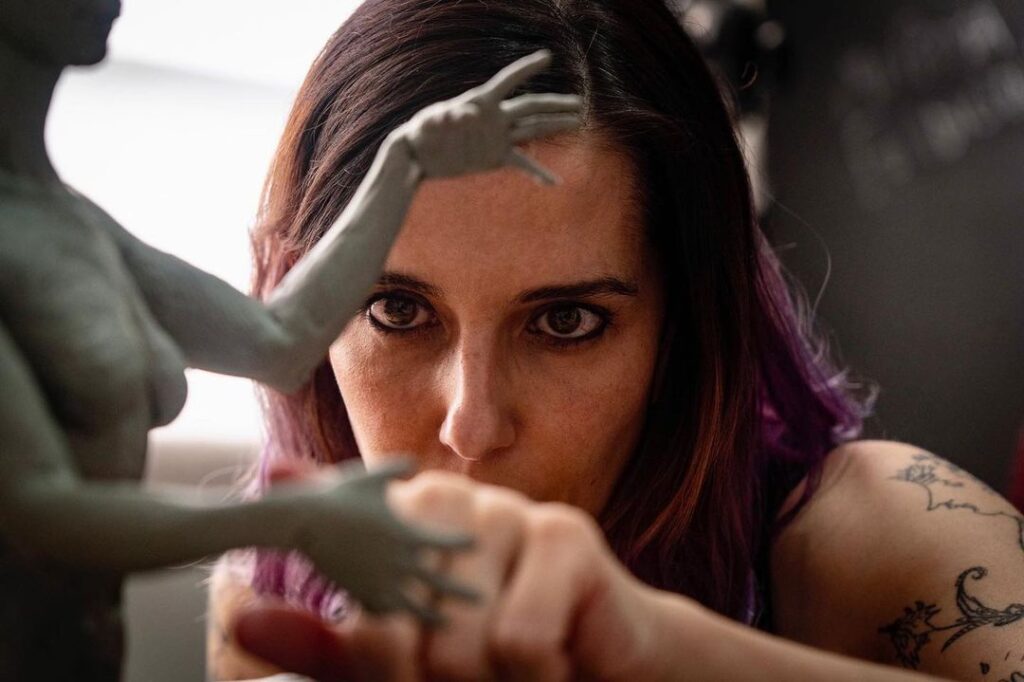
Interview with Francesca Dalla Benetta
You spent much of your childhood with your grandmother exploring museums and learning about Renaissance artists. Do you think Renaissance art influenced your style as a sculptor?
I do believe the Renaissance influenced a lot of my world, consciously or not, but above all that, my Grandma’s stories about renaissance influenced and inspired me, because she made all the sculptors and painters come alive with her storytelling. She knew all of their adventures, all about their lives, and she used to tell me all about it during our long visits in churches and museums. I believe I would never be an artist without her!
Every sculpture you create is so unique, I never know what’s going to be next! How do you approach an idea for a new sculpture? What is your creative process like?
Thank you!! Well, I generally imagine or “see” the idea in my mind’s eye. I always sketch all of my ideas, no matter how good or bad I think they are, as if I am receiving a gift. After a while, I review my drawings and start to select and decide which one is still calling my attention. Sometimes I change things or combine and refine ideas. Then, I start the project by creating the structure, adding volume, detailing textures and features. It is the most satisfying stage of the whole process because it is when I decide and I feel what to add or put to rest. When all is done, the sculpture passes through the mold making and casting process. It can be cast in resin or in wax which is then finally cased into bronze. In both cases, I generally intervene the cast with more details to assure a special and unique piece. The process of using bronze is really fascinating, using fire to create it is amazing. I especially love the patina stage, when I decide which colours are the best to bring out the texture. Resins are equally satisfying process because it allows me to play with colors and sometimes mixed media.


Your sculptures all have their own narratives which add beautiful extra flourishes of detail to your work. How do you approach storytelling as a sculptor?
I love that you noticed that! It was one of my first intentions when I started creating art. After finishing school, I made a career as an SFX makeup artist because I wanted to tell stories and I thought the only way would be to add the element of time to accomplish a narrative. But I soon began to understand how powerful one image can be and with sculpture it could be emphasized because we can relate to a sculpture as it is part of our world. Because of that, I can introduce a fantastic story contained in a single sculpture into our real world.
Your work blends the classic and the surreal together in a very harmonious balance. How do you create that sweet spot between the two?
It took a while to find a language that worked for me. I started with a strong inspiration from the fantastic stories of science fiction and fantasy in books and movies, creating monsters and deformed creatures. In the meantime as you know, the education from grandma was strongly directed to renaissance and classical art. At the beginning I wanted to fight it, I thought it was beautiful but too obvious, and its message too old. But also, I think classical art is in my blood so with time I made peace with it and I started to appreciate it, working more and more with anatomy, learning and finding a balance with my love for the surreal and fantastic. I try adding details that speak about imaginary worlds. I treat my sculptures as real characters in an imaginary but possible world. They have their own life and story.
To be authentic we must relate with non-judgmental people, which is so difficult to find. So often we modify our way of thinking, act, express, and all sort of stuff in order to fit and to be liked.
As an artist you say your task is to “communicate and stimulate a different way of feeling and thinking.” How do you tend to think and feel whilst you’re sculpting? Do you find yourself going into a particular headspace?
I have 3 different states of mind depending on the phase of the creation. The most creative part does not involve using my hands, it is just the fantasy, “seeing” with my imagination to formulate the first idea, the character leaning out her world and showing up. This is sometimes a brief moment, but it is delicious and sweet. It happens spontaneously and without warning. It is beautiful. Also it is stressful because I start worrying about remembering it right. So I sketch every idea I’ve got.
After that I start my technical phase, which involves the building of the sculpture. Before these moments, I think about ways to make it physically work: I measure, I plan, I organize. I want everything to work out fine, the structure, the details are all planned in advance.
Finally, during the last phase, I just make. Just my hands and eyes work, my mind fantasises about other things, but often comes back to check, review and rethink. There is a light feeling attached. Sometimes I’m very present with the touching, the visual, the evolution of the piece, and sometimes I’m somewhere else, listening to music, listening to a story, a podcast or just thinking about trivial stuff of life.
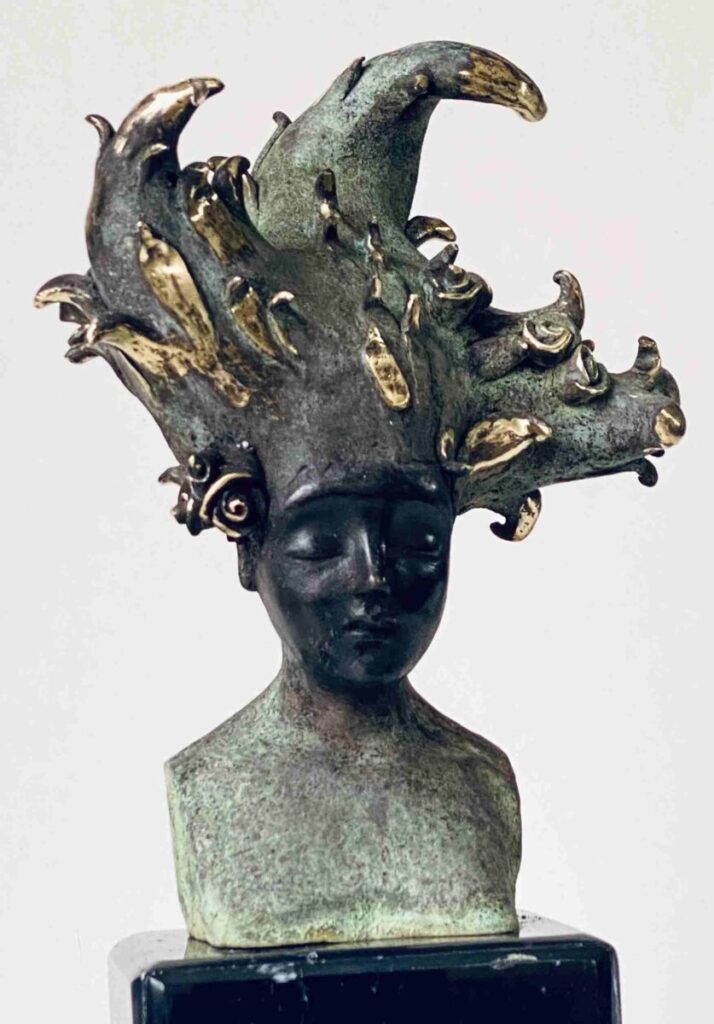
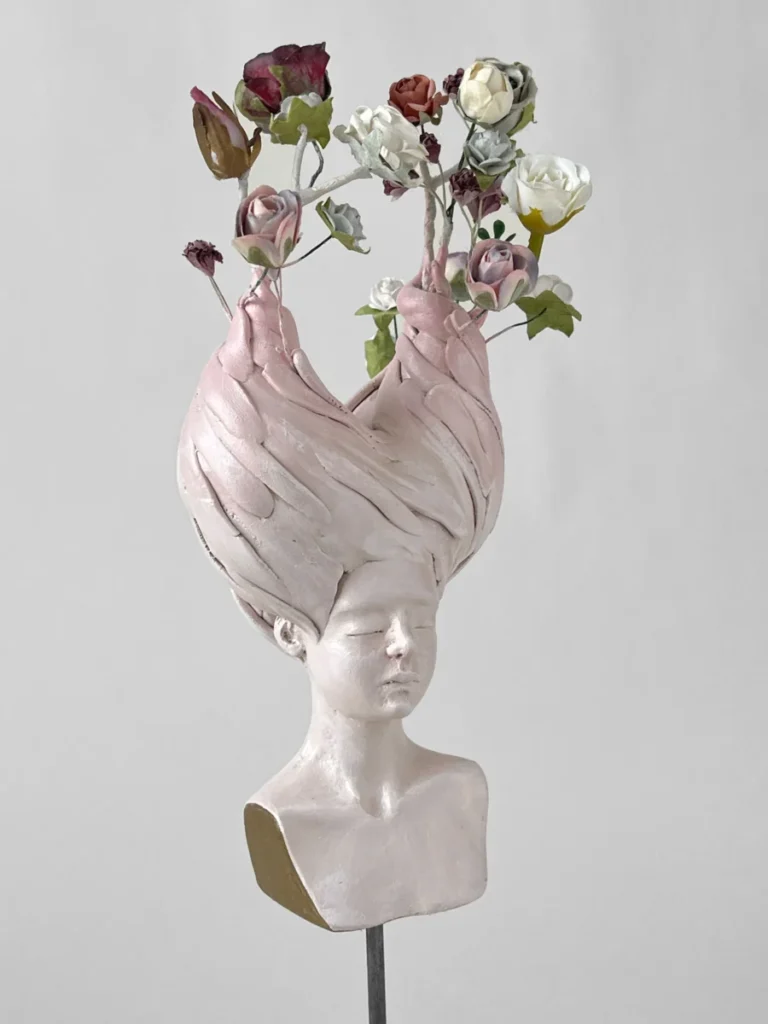
Following on from my previous question, what do you hope those viewing your work can think and feel upon viewing? Or is it a matter of personal interpretation?
I really don’t mind what other people perceive in front of my sculptures as long as they do perceive something. As you say, my task is to “communicate and stimulate a different way of feeling and thinking.”
What is important to me is reaching out and communicating. I’m not a very social person and it’s difficult for me to have “normal” contact with people: I prefer using the language of art. But I understood a long time ago that the message (even when it is delivered with words) is hardly delivered intact, because the meaning depends most of all on who is receiving it, not on the sender. So, to me the success of communication is measured only by the arrival of the message, not by the meaning of the message.
Your work focuses on the studies of human behavior. What is it about this theme that you find to be so appealing to explore in your work?
I never understood why people behave as they do, nor can I grasp their way of thinking. I have struggled all my life trying to be normal, act normal, and most of all like what I should like as a child, girl and woman. I never liked partying, drinking, dancing with people, or being in groups. I thought I was shy, then I discovered that I am on the spectrum and I simply communicate differently and I’m not so good in understanding others’ way of communicating and being.
Most of my life I’ve been confused and I thought I was in someway wrong, I used to observe myself and others and compare. So, I started to study the basics of psychology and sociology to understand better and all these natural interests went directly into my artwork: characters abstracting in other worlds, lonely, with an intimate attitude, more interested in understanding themselves than the outside world. My sculptures represent different facets of being, they wear roles and customs and masks. They imagine flying as Icarus with winged backpacks…
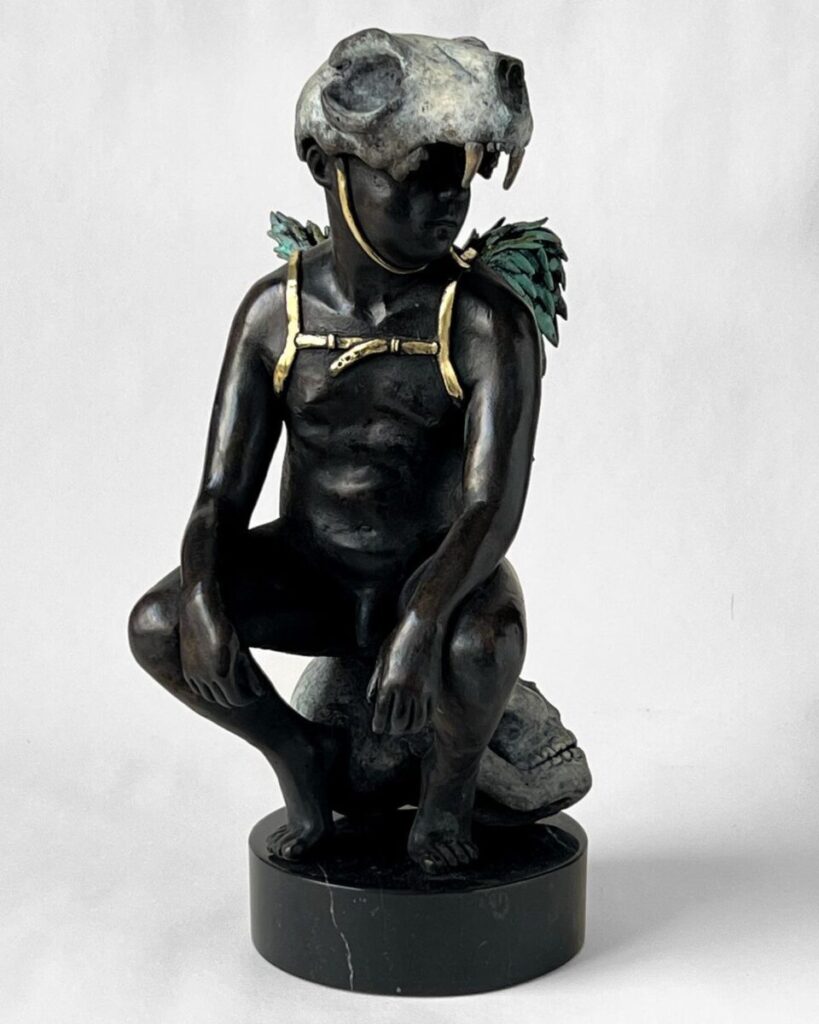
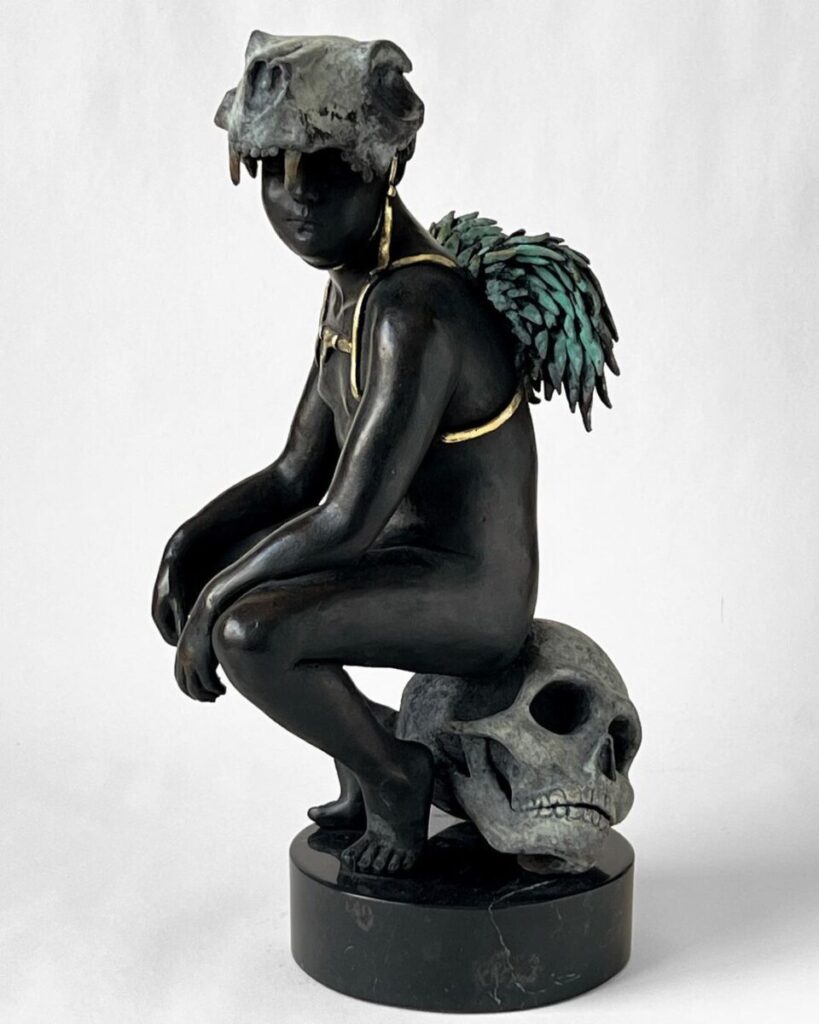
The study of human behavior is a broad and complex theme to explore. How do you explore and break down such a complex subject in order to study and incorporate it into your work?
I simply start from personal experience and use what I study to understand myself and others in specific contexts and situations. I reflect about how reactions, communication and social roles work, I rewind and replay them in my mind and try to understand. My artworks are an interpretation of this understanding (or sometimes misunderstanding): they speak directly of how I or other people cope with life.
What do you find to be the most interesting part of human behaviour?
I think the difference between acting alone versus in a group, what happens when we act as individuals and when we are (or want to be) part of a group. The desire and need to belong is really strong and can alter our behaviour. By ourselves we are more authentic but we also need to relate and communicate and express ourself. To be authentic we must relate with non-judgmental people, which is so difficult to find. So often we modify our way of thinking, act, express, and all sort of stuff in order to fit in and be liked.
Animal and nature motifs also appear frequently throughout your work, often combined with your human subjects. Are these motifs an extension of exploring human behavior and how humans connect with the rest of the world?
In all cultures animals have been symbols of different aspects of human personality, qualities, values and so on. As a lover of mythology, I resort to the use of animal elements as a representation of human nature. They are archetypes and often are the same in different cultures. They clarify the message.
Your art explores other themes such as identity, belonging and relationships. How do you approach these themes in your work? Does your work explore your own personal identity and sense of belonging or do you explore these themes in a broader sense?
Identity, a sense of belonging and relationships are intrinsically related, and one defines the others. Generally my sculptures are single people or characters because through the definition of who they are by themself they can find where or whom they belong to and from there their way to relate (or not to relate) to others. Sculpting these characters helps me to focus and understand myself better.
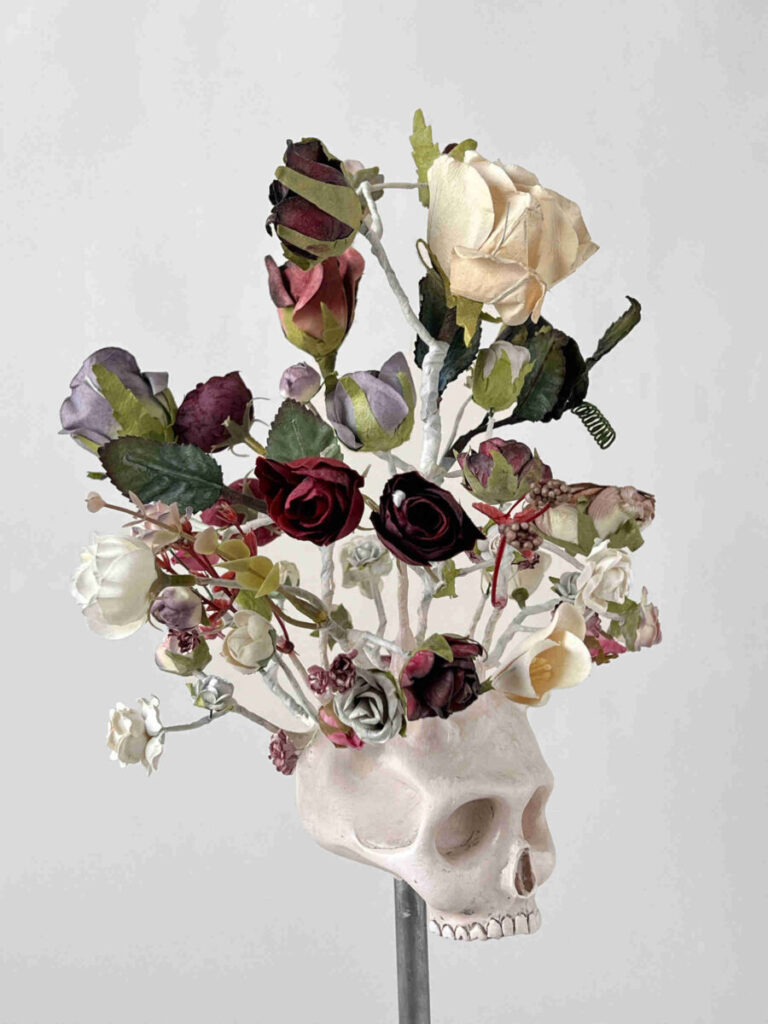

What does identity and belonging mean to you as a person?
As an immigrant, I often reflect on how I perceive my identity in relationship with my sense of not belonging to any country but at the same time belonging to more than one culture. When you live in a completely different culture, in order to survive you have to put in discussion all your given truths and choose what you really want and need.
So, when thinking about myself, I can see that if I overcome the initial pain to feel out of place, I have the huge privilege to choose where, what or whom I really belong to. The final answer is that I belong to myself, because I create my identity in a very conscious way, picking what I consider the best for myself from 2 different cultures and leaving what is not serving my growth and well-being.
Do you have any sculptures you’ve created that are particularly important to you?
My series of Fallen Angels, a bronze series that feature characters with winged backpacks. They are Icarus and they represent our desire to evolve and know the truth about ourself. They are also creatures who decide to sacrifice perfect happiness in order to know themselves and sometimes I feel like them.
You create sculptures because they are solid and more permanent and it’s a “perfect tool to stop doubting reality and oneself.” Does sculpting bring you comfort as an artist in the sense of preventing doubts?
I feel and perceive myself as a volatile creature, I often doubt if my perception is real, if others feel or see the same as me…I realize they often don’t and it makes me feel unstable. Working on something that has volume, weight and dimension in this world anchors me, gives me perspective.

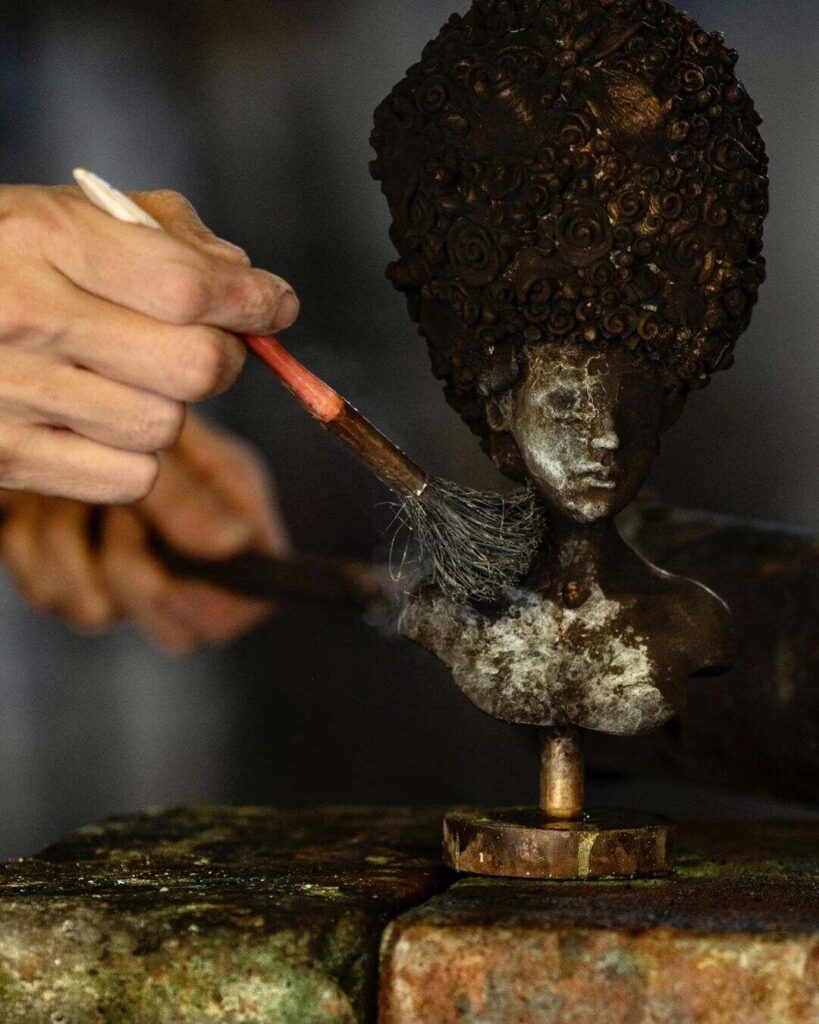
Following on from my previous question, do you find sculptures to be more real and tactile compared to painting on a canvas or drawing in a sketchbook? Almost as if they will last the test of time more than other art mediums?
Yes, something like that, but more important is the sense of grandeur and presence even in my small pieces.
I feel and perceive myself as a volatile creature, I often doubt if my perception is real, if others feel or see the same as me…
When you’re not working on your sculptures, what do you get up to in your spare time?
I don’t have much spare time, because it is difficult to separate my art practice from my home life. I spend all my time doing art related things, thinking about projects, promoting them, selling my art, creating videos or writing about it. I also meditate and exercise, play with my cats and spend time with my boyfriend.
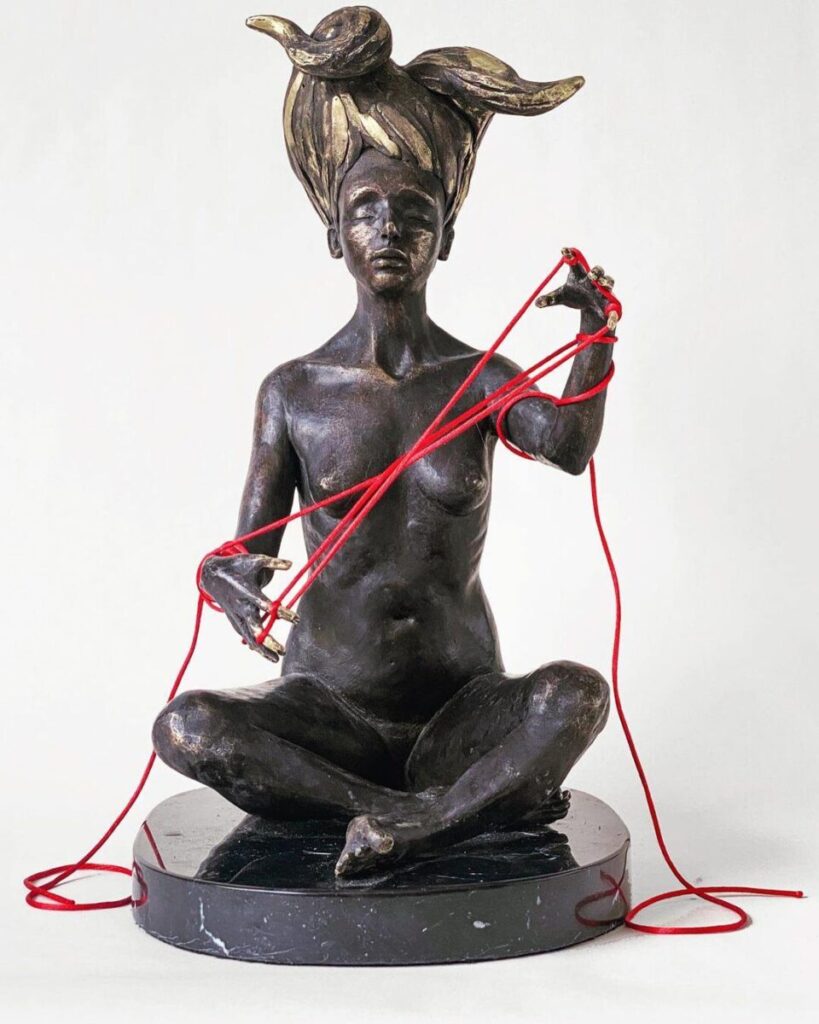

What’s next for you? Any upcoming projects that you can tell our readers a bit about?
I’m really excited for an upcoming exhibition called ‘Identities’ which will be held at the Museum of Contemporary Art in San Luis Potosí, Mexico. Alongside this exhibition, I’m also creating 2 sculptural installations. The first one is called ‘SOLEDAD’ (loneliness), it is a composition of 100 small portrait reliefs of victims of violence. The focus is how violence alters the behavior in the victims and change completely and forever our lives. Also, in a society like Mexico (where I live), it seemed to me important to seize the chance to raise I voice with art and speak out loud. It is one of my few social project and I feel very proud.
The other installation is called CONEXIONES (connections) and they are large hands coming out from the walls and holding colored threads between the fingers. the threads are stretched between the different hands connecting them. It is a breath of hope. This exhibition is taking more than a year to prepare, it involves research, conversations with the victims, and a lot of work in the studio. It will stay in place for almost 6 months and right now I’m looking for more spaces to tour the exhibition.
Meanwhile, I’m working on an amazing project: I’m creating my own interpretation of the 12 Jungian Archetypes, and they will be permanently displayed in a private library in Abu Dhabi. This project connects with my deep interest in psychology and personalities, and the freedom I have in working with my vision and different fantastic and symbolic elements is just incredible. I have already created and sent the first piece, The Sage, an old man sitting on a pile of books, surrounded by animals symbols of wisdom.


